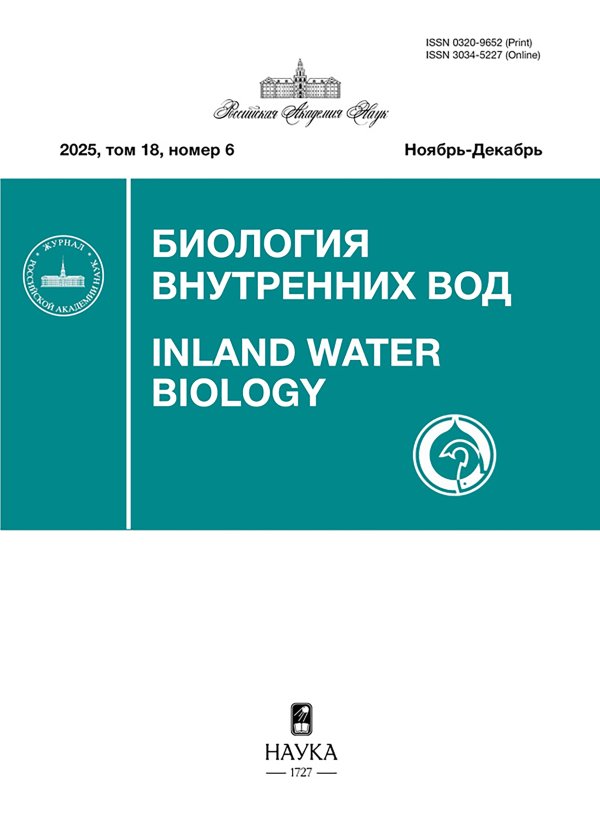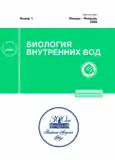The Invasion of the Alien Species Bonnemaisonia hamifera Hariot in Coastal Phytocenoses Near the Southern Coast of Crimea (the Black Sea)
- Authors: Sadogurskiy S.Y.1, Belich T.V.1, Sadogurskaya S.A.1
-
Affiliations:
- Nikitsky Botanical Gardens – National Scientific Center, Russian Academy of Sciences
- Issue: No 1 (2023)
- Pages: 65-71
- Section: ФИТОПЛАНКТОН, ФИТОБЕНТОС, ФИТОПЕРИФИТОН
- URL: https://journals.rcsi.science/0320-9652/article/view/134885
- DOI: https://doi.org/10.31857/S0320965223010175
- EDN: https://elibrary.ru/KTHKMM
- ID: 134885
Cite item
Full Text
Abstract
Based on the results of hydrobotanical research in 2015–2021, it has been found that the global expansion of the Bonnemaisonia hamifera Hariot filamentous sporophyte stage had reached the Southern Coast of Crimea (SCC) by 2017. At present, the invader is registered in all horizons of the SCC phytal. Massively developing in the epiphyton of native species, it inhibits their growth, and in some areas it becomes one of the dominants. This changes the appearance, structure, and production indicators of algal communities (up to their degradation in some areas), which makes it possible to attribute this invasive species to the “transformers” category. It has been shown that the invasion develops rapidly, its vector coincides with the direction of the Main Black Sea Current. Eutrophication can play a stimulating role. Presumably, the species is already present on the southwestern and western coasts of the Crimean Peninsula and will populate the western and northwestern regions of the Black Sea in the next one or two years; expansion into the Sea of Azov is also likely. B. hamifera invasion may threaten biological diversity of the of the entire Azov-Black Sea basin, which under the conditions of its relative isolation can lead to ecological catastrophe that will affect all countries in the region. Currently, there are no ways that could stop or slow down the process of invasion.
About the authors
S. Ye. Sadogurskiy
Nikitsky Botanical Gardens – National Scientific Center, Russian Academy of Sciences
Author for correspondence.
Email: ssadogurskij@yandex.ru
Russia, Yalta
T. V. Belich
Nikitsky Botanical Gardens – National Scientific Center, Russian Academy of Sciences
Email: ssadogurskij@yandex.ru
Russia, Yalta
S. A. Sadogurskaya
Nikitsky Botanical Gardens – National Scientific Center, Russian Academy of Sciences
Email: ssadogurskij@yandex.ru
Russia, Yalta
References
- Калугина-Гутник А.А. 1975. Фитобентос Черного моря. Киев: Наукова думка.
- Крайнюк К.С., Маслов І.І. 2012. ПЗ Мис Мартьян // Фіторізноманіття заповідників і національних природних парків України. Ч.1. Біосферні заповідники. Природні заповідники. Київ: Фітосоціоцентр. С. 277.
- Красная книга Приморского края. Растения. Редкие и находящиеся под угрозой исчезновения виды растений и грибов. 2008. Владивосток: Апельсин.
- Миничева Г.Г. 1998. Использование показателей поверхности бентосных водорослей для экспресс-диагностики трофо-сапробионтного состояния прибрежных экосистем // Альгология. Т. 8. № 4. С. 419.
- Перестенко Л.П. 1980. Водоросли залива Петра Великого. Ленинград: Наука.
- Симакова У.В., Смирнов И.А. 2017. Распространение и экология инвазивного вида Bonnemaisonia hamifera Hariot в Черном море // Труды VI Междунар. науч.-практ. конф. “Морские исследования и образование (MARESEDU-2017)” (Москва, 30.10–02.11 2017 г.). Тверь: ООО “ПолиПРЕСС”. С. 419.
- Экологический Атлас. 2019. Черное и Азовское моря. Москва: Фонд “НИР”.
- Boudouresque C.F., Verlaque M. 2002. Biological pollution in the Mediterranean Sea: invasive versus introduced Macrophytes // Mar. Pollut. Bul. V. 44. Iss. 1. P. 32. https://doi.org/10.1016/S0025-326X(01)00150-3
- Garbary D.J., D’Archino R., Flack B. et al. 2020. First record of Bonnemaisonia hamifera (Bonnemaisoniales, Rhodophyta) in the South Pacific, from the South Island of New Zealand // New Zealand J. Mar. Freshw. Res. V. 54. Iss. 2. P. 167. https://doi.org/10.1080/00288330.2019.1661260
- Guiry M.D., Guiry G.M. AlgaeBase. 2022. World-wide electronic publication, National University of Ireland, Galway. https://www.algaebase.org; searched on 18.04.2022.
- Kolyuchkina G.A., Syomin V.L., Simakova U.V., Mokievsky V.O. 2018. Presentability of the Utrish Nature Reserve’s benthic communities for the North Caucasian Black Sea Coast // Nat. Conserv. Res. V. 3. № 4. P. 1. https://doi.org/10.24189/ncr.2018.065
- Richardson D.M., Pyšek P., Rejmanek M. et al. Naturalization and invasion of alien plants: concepts and definitions // Diversity and Distribution. 2000. V. 6. P. 93. https://doi.org/10.1046/j.1472-4642.2000.00083.x
- Sadogurskiy S.Ye., Belich T.V., Sadogurskaya S.A. 2019. Macrophytes of the marine water areas of the nature reserves in the Crimean Peninsula (Black Sea and Azov Sea) // Int. J. Algae. V. 21. № 3. P. 253. https://doi.org/10.1615/InterJAlgae.v21.i3.50
- Simon-Bichard-Breaud J. 1972. Le biocycle de Bonnemaisonia hamifera Hariot (Bonnemaisoniacée, Rhodophycée) // Bulletin de la Société Botanique de France. V. 119. Iss. Sup. 1. P. 311. https://doi.org/10.1080/00378941.1972.10839098
- Spiridonov V.A., Simakova U.V., Anosov S.E. et al. 2020. Review of Macropodia in the Black Sea supported by molecular barcoding data; with the redescription of the type material, observations on ecology and epibiosis of Macropodia czernjawskii (Brandt, 1880) and notes on other Atlanto-Mediterranean species of Macropodia Leach, 1814 (Crustacea, Decapoda, Inachidae) // Zoosystematics and Evolution. V. 96. Iss. 2. P. 609. https://doi.org/10.3897/zse.96.48342
- Streftaris N., Zenetos A., Papathanassiou E. 2005. Globalisation in marine ecosystems: the story of non-indigenous marine species across European seas // Oceanography and Marine Biology: An Annual Review. London: Taylor & Francis. V. 43. P. 419.
Supplementary files













